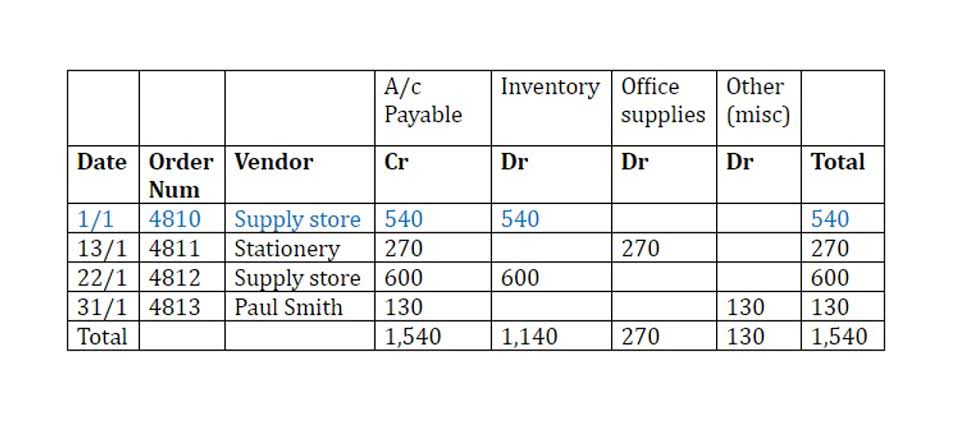Content

If expenses for producing products or paying for services are cutting into your margins, it might be time to look deeper. Take a look at how much it costs to produce your product, and figure out ways to reduce the cost without lowering the quality. For every additional widget sold, 60% of the selling price is available for use to pay fixed costs. Contribution margin analysis helps managers compare products, make decisions about whether to add or subtract a product line, decide how to price a product or service, and even how to structure sales commissions. When the contribution margin is negative, it means that each unit produced results in a loss. When it is positive it means that it might be worth producing depending on your fixed costs. When analyzing profitability and making business decisions the concept of contribution margin plays an important factor in optimizing production.
- These are predictable costs, and that’s why we use our margin to pay fixed costs because we know how much they’re going to cost each month and how much money we’ll need to pay them and still have profit left over.
- The last major option is the simplest, but it’s also the trickiest.
- Essentially, a contribution margin represents the business’s break-even point.
- When it is positive it means that it might be worth producing depending on your fixed costs.
- The concept of contribution margin is applicable at various levels of manufacturing, business segments, and products.
- A negative margin depletes profits and requires that price be adjusted to combat this, if not pulling the product completely.
Learn more about financial ratios and how they help you understand financial statements. Gross profit is an important key performance indicator to track, but so is the contribution margin. Many business owners, unfortunately, overlook contribution margin or do not fully understand what it represents. To truly understand your business’s financials, learn what contribution margin is, how you calculate it, and what the number means for your business’s ability to grow and expand. Conflicts also prevent time slot requests being met at the scheduling stage. Here, though, the reference scenario takes the form of TOCs’ requested orders, data that, together with their implications for revenues or variable costs, are very difficult to establish.
Let’s Talk About Your Data
The potential for forgoing the superfluous task of establishing fixed cost constituents considerably reduces the workload involved in providing input variables. Setting the contribution margin as the criterion for short-term decision making questions the usefulness of full cost systems in enterprises. Full cost systems are, in fact, not appropriate, given that they include fixed costs, which are usually unavoidable. For example, if you sell handmade earrings for $50 a pair and your variable costs to craft those earrings are $20, then you have a contribution margin of $30. The contribution margin has a range of different uses, but most importantly, it’s a great way to decide whether to reduce prices for specific products.
How do you calculate contribution margin?
The contribution margin is computed as the selling price per unit, minus the variable cost per unit. Also known as dollar contribution per unit, the measure indicates how a particular product contributes to the overall profit of the company.
This statement provides a clearer picture of which costs change and which costs remain the same with changes in levels of activity. Contribution margin, also known as contribution rate, is a measure of profit as a percentage of revenue. In the example above, $350 remained as profit from $1,000 total revenue – a 35% contribution margin. You can also think of it as the percentage of revenue that contributes to fixed costs after accounting for your variable costs (like the shipping costs and ad spend listed above.
What does the contribution margin formula tell you?
The first step in doing the calculation is to take a traditional income statement and recategorize all costs as fixed or variable. A price change is an easy way to improve the margin but the business needs to evaluate whether the customer is willing to pay more for the product. Sometimes it’s not simply one action, but rather something you need to do collectively as a team to increase your sales. For example, focusing your sales team on attracting long-term, high-profit customers or spending more time qualifying leads. You’re raising your prices because the cost of producing your goods has gone up.
If you’re CM is negative, alarms should be going off throughout your office, and the team needs to reevaluate your product and marketing costs. For example, let’s say you sell hats for $10, and your variable costs are $5. You may pay the same amount per unit of raw materials used to make a product , but the quantity of raw materials may vary based on how much you produce. Costs that should not be included in the variable contribution margin calculation include factory overhead and selling and administrative expenses . Contribution margin should be a key component of the target costing process, where a required margin is established before a product is designed. The product design process then goes through several iterations, to see if the projected price and cost of the product will result in the minimum desired contribution margin. This usually means that the concept is put on hold and is re-evaluated from time to time, to see if the circumstances have changed sufficiently to justify restarting the product development process.
For example, you might have to raise your shipping fee because the cost has gone up, but you can use a different vendor to source a product, thus reducing the overall price of your product. This will ensure you don’t upset customers and while increasing your margin. It is not recommended to compare contribution margins across different industries, because the contribution margin can be vastly different depending on the type of business involved. However, there is a wide range of applications for the concept, and understanding how to apply it can provide helpful insight into managing sales, expenses, and operations. In general, developing countries have the challenge of providing resources to encourage entrepreneurship among their citizens.
The results will show how many units of the product your business must sell to break even. Break-even analysis builds off of contribution margin to determine the amount of sales needed for a company to break even between expenses and profits. Every product has a break-even point where it becomes profitable after a certain number of units sold.
What are variable costs?
The goal of every business owner is to have as much as possible left over after all expenses are paid; that’s obvious. The simplest way to break it down is to look at it by individual product or service. Using the ecommerce example again, if your company sells custom rugs for $50 and it costs you $30 to source the materials and produce the rug, your margin is $20. On the other hand, variable costs change each month and vary based on the level of production. These are predictable costs, and that’s why we use our margin to pay fixed costs because we know how much they’re going to cost each month and how much money we’ll need to pay them and still have profit left over. Some companies may have a high contribution margin, but also many fixed costs — whereas other companies may have a low contribution margin and fewer fixed costs.
- Commercial institutions tend to attach high interest to the loans, thus making it too difficult for small businesses to access such loans.
- We can calculate Groupon’s breakeven volume of sales by focusing on the relationship of costs to sales.
- You are trying to see your gross profit minus any other variable expenses.
- In the developing world, there is no access to integrated market information.
- Because your gross profit percent % shows how effective you are in running your business.
The contribution margin of your products indicates their individual profitability measures. This is valuable information when examining a product’s contribution margin in comparison with others. Most of the best accounting software options will do most of this analysis for you. And many e-commerce platforms have enough accounting systems built-in to give you the numbers you need. But it’s still valuable to understand what’s behind the numbers and how you can use them to optimize your decision making.
Products
Part of understanding how to calculate the contribution margin ratio involves fixed costs vs. variable costs. You need to understand the differences and similarities between these two sets of expenses. A company might have a product line with a positive contribution margin even if its impact to net profit is negative. If its contribution margin is negative, however, the company loses money with each unit it produces. Since it can’t make up that kind of loss with volume, it should either drop the product line or increase prices. If you’re trying to figure out your break-even point, every time you add a customer, you have to subtract commissions out of gross profit. You are trying to see your gross profit minus any other variable expenses.

But our editorial integrity ensures our experts’ opinions aren’t influenced by compensation. Daasity enables better data-driven decision making for consumer product brands, leading to faster and more profitable growth. Some customers who may be less price-sensitive may not mind as much, but higher Contribution Margin prices may turn off potential new customers. One of the best ways to improve customer retention is to leverage zero-party data. By collecting valuable data from your customers, you can ensure your retention campaigns are relevant and personalized, which will lead to higher repurchase rates.
Increase Sales
Since 1992 Matt McGew has provided content for on and offline businesses and publications. Previous work has appeared in the «Los Angeles Times,» Travelocity and «GQ Magazine.» McGew specializes in search engine optimization and has a Master of Arts in journalism from New York University.
For freelancers and SMEs in the UK & Ireland, Debitoor adheres to all UK & Irish invoicing and accounting requirements and is approved by UK & Irish accountants. Start invoicing with SumUp today and gain access to additional tools to run your business.
It represents the incremental money generated for each product/unit sold after deducting the variable portion of the firm’s costs. To improve the business contribution margin, the business has a range of options that include price increases, operational efficiencies, reducing cost or negotiating supplier discounts. Requiring customers to purchase a certain number of products to get free shipping is a great way to take the load off your shoulders. If they choose not to purchase over the threshold, then they’re responsible for paying for shipping. Shipping costs add up quickly, and this variable expense will cut into your margin if you aren’t paying attention to the fluctuations in shipping. I mentioned bundling is a great way to save money, and that’s one reason why most ecommerce stores and businesses won’t charge for shipping if you spend $25 or $50.
How do you increase contribution margin?
To increase your contribution margin, you need to do some combination of : Reducing your cost of goods sold. Reducing your labor cost. Optimizing your pricing for the maximum profit supported by the market.
Since an overall contribution margin looks at the company’s performance as a whole, the numbers required to calculate this equation can be taken directly from the line items on your company’s income statement. Using this equation, you can create a Contribution Margin Income Statement, which reverses the order of subtracting fixed and variable costs to clearly list the contribution margin. It’s also important to understand the difference between the gross margin and the contribution margin.
•The impact of short-term decisions on enterprise value is equal to the impact of NCF on the first accounting year not discounted. •The variation of activity volume when an increase in manufacturing capability is not required. Drill down on the lowest performing department or team to the customer and job profitability.

Market information is needed in order to meet the ever changing demands of customers. Their needs, wants and taste keep changing, hence every manager should know what to expect from their customers. Market information is needed for forecasting by manufacturers and retailers alike.
An across-the-board price increase may be necessary if you haven’t raised your prices in a while, a quick email or call to your best customers https://www.bookstime.com/ can help remedy the situation. You may also be able to reduce your cost by purchasing more upfront if it’s a product that sells well.

You’ll want to look into this and identify the bottleneck running up your labor. Improving your onboarding process, providing better customer service, and offering incentives to long-term customers can all help improve retention. As your business grows, you can determine how much it will cost you to acquire a new customer.
First National Bank has an online program that helps SMEs with records keeping. This service is commendable in the sense that it helps in building the credibility of the SME with the banking institution.
